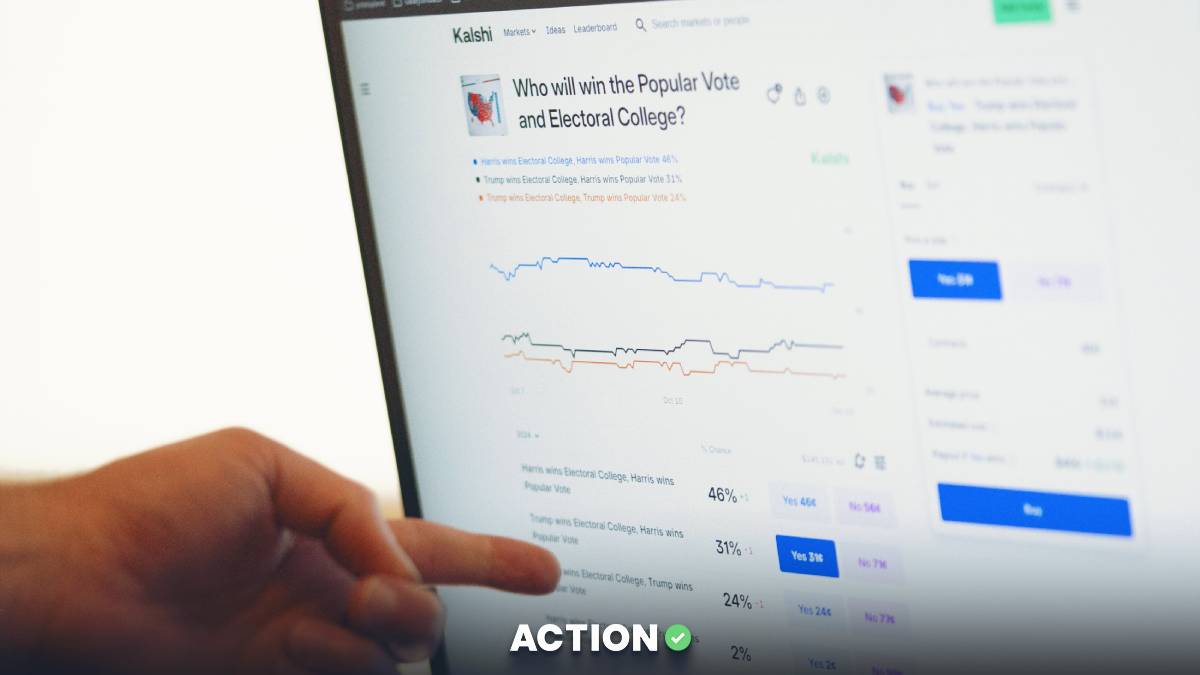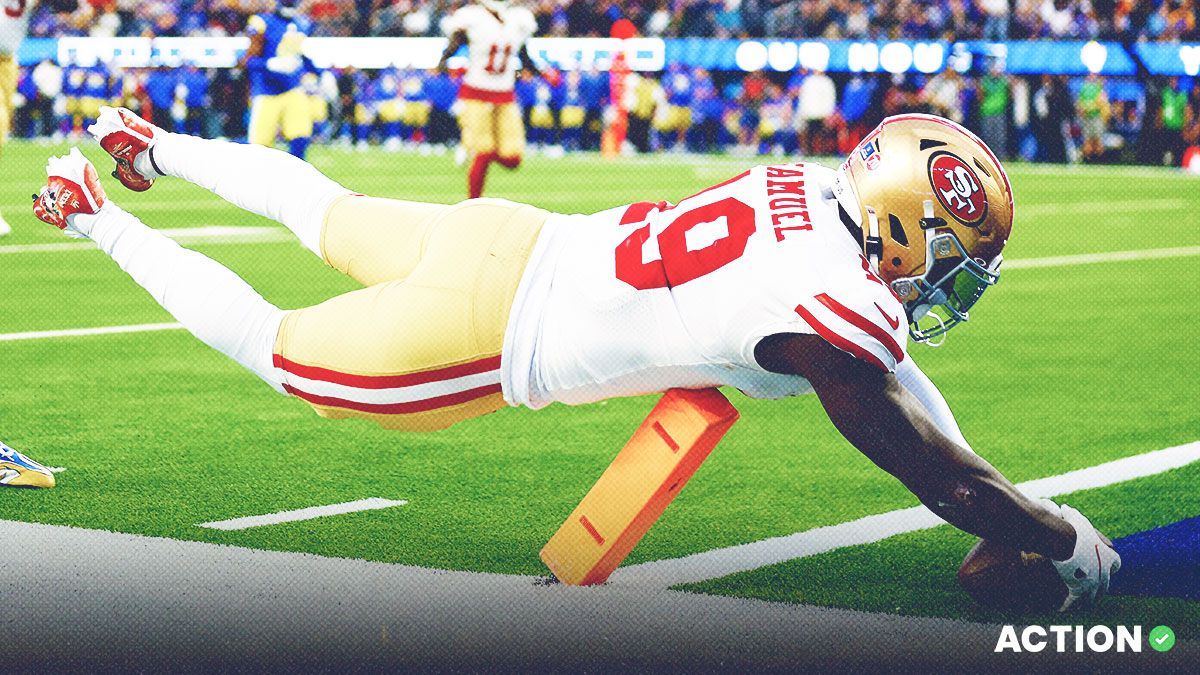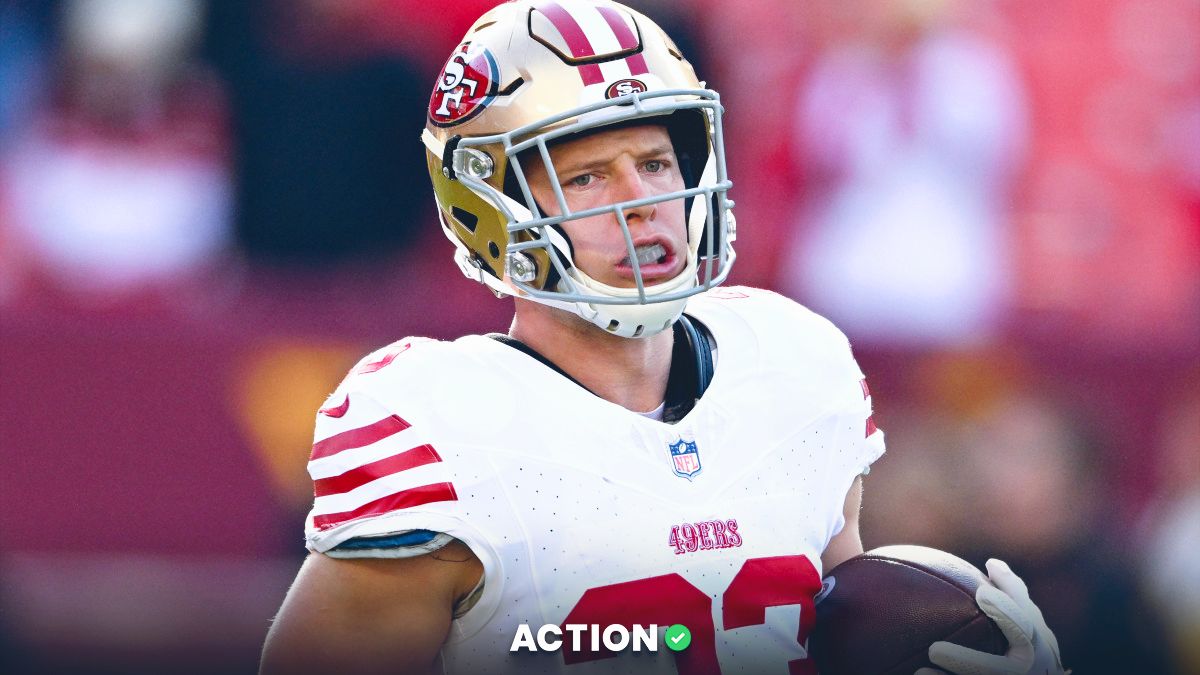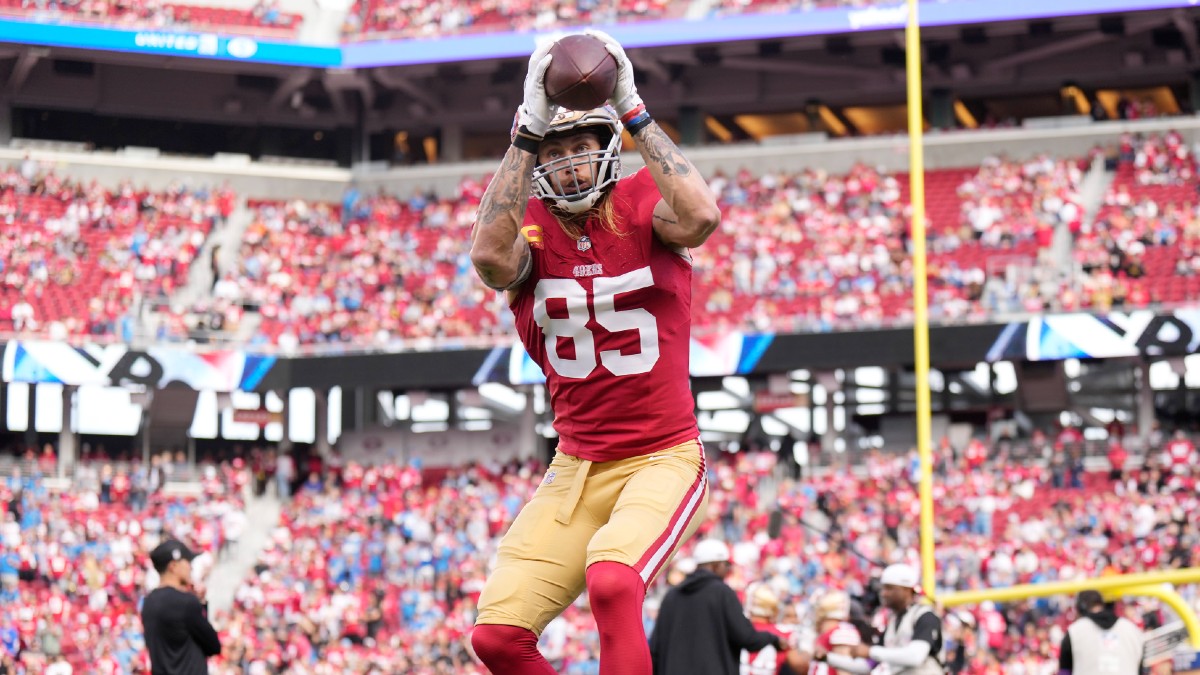Expected Points in football estimate how many points a team is expected to score on a possession on average given the situation.
It factors in yard line, down and distance, time left and more.
Then there's Expected Points Added, which measures how a team's Expected Points changed on a given play. That number, EPA, is what you hear about most often.
On first-and-10 from their own 25-yard line, teams score about 1.06 points on average. After a 15-yard pass, that team is now expected to score 1.92 points — so it added .86 Expected Points on that play.
Table of Contents
Expected Points Added Definition
The theory behind Expected Points Added (EPA) is simple. The statistic is used to try and define how many points a player or play is worth to a team.
Every play is considered with context in mind, meaning down distance and field position are used to evaluate the amount of EPA compared to the actual result of the play. These statistics can be added to create a cumulative EPA over the course of a time period or season, or it can be viewed by EPA/play.
EPA was originally brought to the public when The Hidden Game of Football was published in 1988 to provide a better look at how statistics were impacting football.
The statistic is primarily used for quarterbacks when being considered on an individual basis.
EPA Examples
When looking at EPA, you have to break up evaluations into individual and team/general categories. From an individual perspective, here is a look at how top quarterbacks ranked in terms of EPA in 2020, and how their individual stats actually compared.
While passing yards and touchdowns are obviously going to positively impact a team's success, EPA allows us to go beyond the basic numbers to see how a player is contributing to their team.
On a team level, EPA is most commonly viewed from the play-by-play lens. With a nod toward success rate, plays aren't evaluated just by the actual outcome, but also by the context of the play.
For example, if the down-and-distance is third-and-9 and the offense picks up 8 yards, the EPA of the play will be lower than the EPA of picking up 8 yards on third-and-6.
Below is a compiled list of EPA per certain play scenarios via sources you can read more about here and here.
There are an infinite number of possibilities that go into EPA on a play-by-play basis, but the values are logical. The success of certain NFL plays isn't judged in this metric by outcome in a cookie-cutter way, but rather the actual impact the play had.
EPA Criticisms
Expected Points Added have become a popular stat for fans and bettors trying to dig deeper into the context of each football play.
But EPA is far from perfect, and there are a few things to keep in mind.
1. Many popular EPA models is that scoring in football changes by year, and it relies on small sample sizes to contextualize those plays.
2. EPA doesn't separate player performance from other players
3. It doesn't adjust for opponent (though there are opponent-adjusted versions out there).
4. It doesn't account for turnovers, or a lot of other randomness. The whole reason we try to use stats like these is to remove "luck" from our analysis and figure out who the best teams and players are, if everything else is equal.
So here's where EPA falls short. Wisconsin QB Graham Mertz fumbled the snap on first-and-goal from the 1-yard line against Penn State, moving the ball back to the 7-yard line.
Penn State's defense gained 1.66 EPA on that play. But do they deserve it? All they did was watch Mertz fumble the snap.
Can EPA Help Me With Betting?
Whether you want to implement EPA into your betting arsenal is something that you'll have to evaluate, but if you choose to do so, there are creative ways in which you can apply EPA.
For example, if you see that a team is outperforming its dropback EPA, you may want to fade a quarterback in player props. Or, if you want to get really aggressive, you can try and use the concept of EPA to your advantage in live betting. If you believe that a play wasn't productive on its surface, but it actually had a greater impact than odds are giving it credit for, you could pounce on the opportunity.
Alternatively, you can take a more simplistic route and merely look at how a team is performing against EPA and judge if it can provide you an edge in a certain matchup. The possibilities are endless.
























































